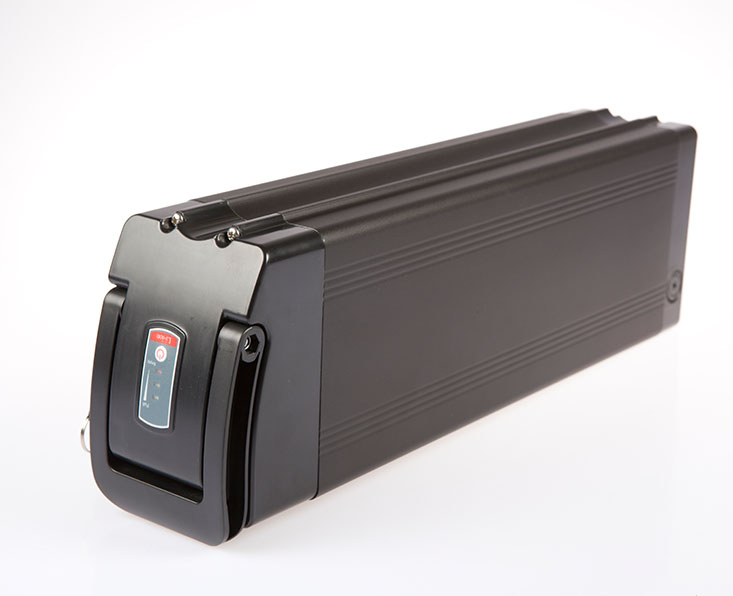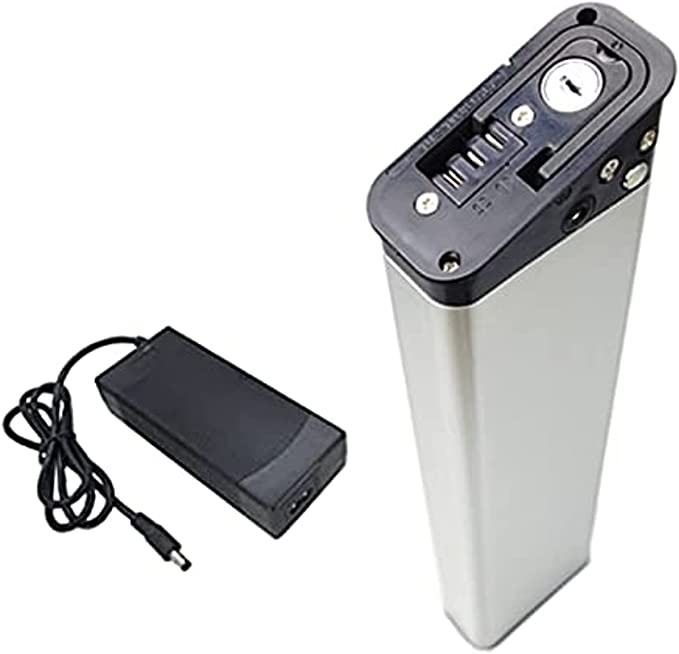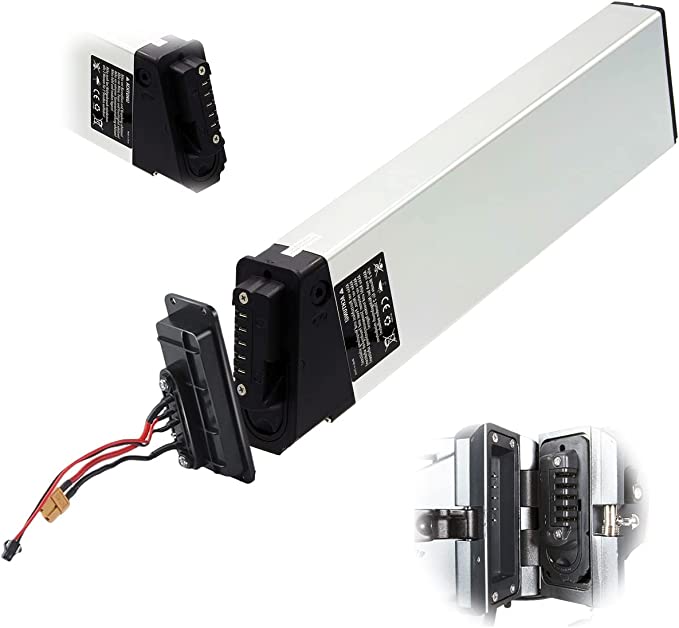E-bike Battery Types: How to Choose Electric Battery for Your Bike
Choosing the right e-bike battery is not as straightforward as picking the one with the most impressive specifications. The task involves considering the intricacies of various battery types, weighing their pros and cons, and identifying the one that aligns with your specific needs and lifestyle. Making the right choice can be the difference between breezing up hills with ease or anxiously watching your battery life dwindle on a remote trail.
In this comprehensive guide, we’ll peel back the layers of complexity surrounding e-bike batteries. We’ll delve into the heart of various battery types, their strengths, and shortcomings, as well as practical considerations when choosing the most suitable battery for your e-bike. Whether you’re a seasoned e-bike enthusiast or a curious newcomer, this blog is your one-stop resource to understanding and choosing the optimal e-bike battery.
So, grab your helmet and strap in – we’re about to embark on a journey through the electrifying world of e-bike batteries! Stay tuned as we charge into the specifics and demystify the technical jargon, making your next e-bike battery choice a breeze.
E-bike Batteries: The Heart of Electric Bikes
E-bike batteries provide the ‘juice’ that runs the motor, which in turn gives the push or “assist” that differentiates e-bikes from traditional bicycles. The battery stores and supplies the electric energy needed to propel the bike, all the while working in synergy with the pedal-assist system to determine the amount of help the motor should provide. The more powerful the battery, the greater the speed and the longer the range an e-bike can provide.
An e-bike battery’s functionality extends beyond merely providing power. It is a sophisticated piece of technology that also influences the bike’s weight distribution, balance, and overall performance. Choosing the right battery can enhance your e-bike experience, providing a smoother ride, longer distance coverage, and, ultimately, more enjoyment.
Types of Ebike Batteries
Lithium-Ion Batteries (Li-ion)

Description and Key Features
Lithium-Ion (Li-ion) batteries are a staple in today’s high-tech world, powering everything from smartphones to electric vehicles, and of course, e-bikes. They’ve become the de facto standard for e-bikes due to their impressive energy density, long cycle life, and relatively low self-discharge rate.
Li-ion batteries work by moving lithium ions from the negative electrode to the positive electrode during discharge, and back when charging. The high energy density means that they can store a substantial amount of energy for their size and weight, which is a crucial advantage for e-bikes that need to balance power with weight and size considerations.
Additionally, Li-ion batteries boast a long cycle life, able to endure hundreds, or even thousands, of charge and discharge cycles before their capacity starts to degrade. They also have a low self-discharge rate, meaning they retain their charge for a longer period when not in use compared to some other battery types.
Pros and Cons
One of the primary advantages of Li-ion batteries is their light weight. This weight efficiency directly translates into more agile handling and less exertion for the rider, particularly on longer journeys or when maneuvering steep inclines.
Moreover, Li-ion batteries deliver consistently high performance and do not suffer from the memory effect that can plague NiCad batteries. This means you can partially charge or discharge your Li-ion battery without worrying about reducing its overall capacity.
However, as with any technology, Li-ion batteries come with their share of drawbacks. First among these is their cost. Li-ion batteries are more expensive to produce than other types of batteries, a cost that often gets passed on to the consumer. For potential e-bike buyers, this means a higher upfront cost compared to e-bikes equipped with other types of batteries.
Another issue to consider is their charging requirements. To maximize the life span of a Li-ion battery, specific charging practices need to be followed. For example, it’s generally recommended to avoid fully depleting a Li-ion battery and to keep it in a cool, dry place. This adds a layer of complexity to the battery maintenance routine.
While Li-ion batteries perform exceptionally well in most conditions, their performance can decline in colder temperatures. This can result in a reduced range during winter months, a factor that riders in colder climates need to consider.
Even though Li-ion batteries command a higher price and require more careful maintenance, their high energy density, light weight, and long life make them an excellent choice for most e-bikes.
Below are our cherry-pick Li-ion Batteries that you can trust on Amazon.
Lithium-Ion Polymer Batteries (Li-Po)
Description and Key Features
Lithium-Ion Polymer (Li-Po) batteries represent an evolution in Lithium-Ion technology. While they share many similarities with Li-ion batteries, their defining characteristic lies in the use of a polymer electrolyte instead of a liquid one. This subtle alteration results in batteries that are not only lighter, but also capable of being manufactured in a wide array of shapes and sizes.
The flexibility in form factor that Li-Po batteries offer is particularly advantageous in e-bike design. It allows manufacturers to create sleek, aerodynamic e-bikes by integrating the battery more seamlessly into the bike frame. The lower weight also contributes to improved handling and efficiency.
Pros and Cons
Like Li-ion batteries, Li-Po batteries excel in terms of high energy density and long cycle life. This ensures that e-bikes equipped with Li-Po batteries offer extended range and longevity, two key factors for regular e-bike users.
Li-Po batteries are lightweight, which helps in improving the balance and maneuverability of the e-bike. Moreover, the versatile design possibilities afforded by Li-Po batteries enable a more aesthetic integration of the battery into the e-bike frame, contributing to a more visually pleasing and streamlined design.
However, they inherit the same price tag issue as Li-ion batteries. The advanced technology and benefits provided by Li-Po batteries come at a cost, making them one of the more expensive options on the market.
Similar to Li-ion batteries, Li-Po batteries also demand careful charging and storage practices to maintain their lifespan. Improper handling can not only reduce the battery’s longevity but also lead to safety issues.
Furthermore, Li-Po batteries, like their Li-ion counterparts, may see a decrease in performance in colder temperatures. Riders in colder climates may experience a reduction in range during colder months, making this an important consideration when selecting a battery type.
If cost is not a primary concern and you value a high-performing, lightweight battery that can be integrated seamlessly into your e-bike’s design, Li-Po batteries could be a great fit. As with any battery choice, align your selection with your riding style, local climate, and overall requirements from your e-bike.
Understanding these different types of batteries, their strengths and weaknesses, is crucial in determining the best fit for your e-bike needs and preferences. Consider your biking habits, terrain, and climate when making your choice, and you’ll be well on your way to enjoying the many benefits of e-biking.
Lead Acid Batteries
Description and Key Features
Lead Acid batteries, considered the pioneers in the field of rechargeable batteries, have been powering various devices long before the advent of e-bikes. When you open the hood of most cars, the battery you find nestled in the engine bay is typically a Lead Acid type.
These batteries operate on a simple principle: when charged, the lead dioxide (PbO2) on the positive plates reacts with the sulphuric acid (H2SO4) electrolyte to produce lead sulphate (PbSO4), water (H2O), and energy. When discharged, the reaction reverses, allowing the battery to be used repeatedly.
However, Lead Acid batteries are not particularly efficient in terms of energy storage. Their energy-to-weight ratio and energy-to-volume ratio are both on the lower end of the spectrum. Simply put, for their size and weight, they store less energy compared to other modern battery types. So unlike the batteries we have discussed above, this type of batteries are not commonly applied in ebikes nowadays.
Pros and Cons
On the positive side, Lead Acid batteries are widely recognized for their cost-effectiveness. They are significantly cheaper to produce, making them an affordable option for budget-conscious e-bike riders. Furthermore, they are one of the most easily recyclable battery types. Roughly 95-99% of Lead Acid batteries are recycled at the end of their life, making them a surprisingly green option.
However, Lead Acid batteries also come with a distinct set of drawbacks. One of the most noticeable disadvantages is their substantial weight. When fitted to an e-bike, a Lead Acid battery can add considerable heft, making the bike harder to maneuver and less efficient, particularly on inclines.
In terms of longevity, Lead Acid batteries typically have a shorter life span compared to their Nickel-based or Lithium-based counterparts. Frequent full discharges can dramatically reduce their lifespan, often necessitating their replacement within 1-3 years of regular use.
Another factor to consider is that Lead Acid batteries are sensitive to high temperatures, which can accelerate their degradation and further shorten their life span. They also require regular maintenance to ensure they stay in good working condition. This maintenance typically involves ensuring the electrolyte level stays within the recommended range and keeping the terminals clean and corrosion-free.
While Lead Acid batteries might seem an old-school choice in the fast-evolving world of e-bike technology, they can still be a viable option for those who prioritize affordability and recyclability over performance and convenience.
Nickel-Cadmium Batteries (NiCad)
Description and Key Features
In the initial stages of e-bike technology, Nickel-Cadmium (NiCad) batteries played a pivotal role. These batteries, with their high discharge rate and impressive number of recharge cycles, were an ideal choice for the demands of electric bicycles.
NiCad batteries operate on the principle of an electrochemical reaction between nickel hydroxide and cadmium. The high discharge rate of these batteries refers to their ability to supply a large amount of current (power) in a short time, which can be especially useful in situations where a sudden burst of energy is needed, such as climbing a steep hill.
Another significant advantage of NiCad batteries is their durability, a feature that directly influences the lifespan of the battery. They are resilient, capable of withstanding numerous charge and discharge cycles before they start to degrade.
Pros and Cons
NiCad batteries are characterized by their robust performance, even in less than ideal conditions. Unlike some other battery types, NiCad batteries maintain their performance in cold temperatures, making them a popular choice for e-bike riders in colder climates.
However, NiCad batteries have a unique drawback known as the “memory effect.” This phenomenon occurs when a NiCad battery is repeatedly recharged before it’s fully discharged. Over time, the battery “remembers” the smaller capacity and loses its ability to hold a full charge, effectively reducing its range.
Another limitation of NiCad batteries is their weight. They are typically heavier than other battery types, such as Lithium-Ion batteries. This increased weight can affect the overall balance and handling of the e-bike, especially at higher speeds or during maneuvers.
An important point to consider is the environmental impact of NiCad batteries. They contain cadmium, a toxic heavy metal that is harmful to the environment if not disposed of properly. Many countries have imposed restrictions on the use of cadmium in batteries, leading to a decrease in the popularity of NiCad batteries in favor of more environmentally friendly options.
While NiCad batteries have been instrumental in the early development of e-bike technology, the emergence of newer, lighter, and more eco-friendly battery technologies has made them a less common choice in recent years. However, in certain circumstances, such as regular biking in cold climates, NiCad batteries may still hold relevance.
How to Choose the Correct V and AH Batteries for Your E-Bikes
Determining the Average Range of an E-Bike Battery
Ever come across an e-bike battery with no mention of its average range, or perhaps you’re considering a DIY e-bike build? Determining the average range of an e-bike battery is a skill that will surely come in handy. While it may seem technical, this process is quite simple once you grasp the basic formula, provided you have the necessary data – Amp-Hours (Ah) and voltage (V) of your battery.
The Calculation Formula
By multiplying the Amp-Hours (Ah) with Voltage (V), you can obtain the Watt-Hours (Wh) value of the battery, a figure that represents the battery’s energy storage capacity. Here’s how you do it:
Amp-Hours (Ah) x Voltage (V) = Watt-Hours (Wh)
Using this formula, you can transform the Ah and V values into a practical figure (Wh) that allows you to gauge the range of your e-bike.
Translating Watt-Hours into Mileage
To convert the Watt-Hours into a more tangible metric, consider that on average, an e-bike consumes approximately 20 Wh per mile. With this figure, we can now calculate the estimated range of a fully charged battery. Here’s the formula:
Watt-Hours (Wh) x 1 (mile) / 20 Wh = [Mileage]
A Practical Example
Let’s take an example of a 14 Ah/36V battery. Using the first formula, we calculate its energy capacity to be around 504 Wh. Then, we estimate the range as follows:
504 Wh x 1 mile / 20 Wh = 25 miles
Thus, a 14Ah/36V battery would typically offer an approximate range of 25 miles on a full charge.
It’s essential to remember that the estimated 20 Wh per mile is an average, and actual consumption may vary based on the type of battery, terrain, rider weight, and other factors. However, these formulas provide a useful starting point to verify the range claimed by the manufacturer or to estimate the range for a custom-built e-bike.
In the end, understanding your e-bike battery’s potential range helps you choose a battery that aligns with your riding needs – whether it’s a quick ride to the grocery store or a weekend adventure in the countryside.
Factors Affecting the Performance of E-bike Batteries
Several factors come into play that can influence the performance of e-bike batteries. A critical factor is the battery capacity, measured in watt-hours (Wh). A higher capacity translates into a longer range, allowing you to ride further on a single charge.
The type of cells used within the battery is another determinant. Different cells have varying levels of energy density, longevity, and resilience to wear and tear.
External factors also play a role, including the terrain you’re riding on, the weather conditions, and the weight the e-bike has to carry. For instance, steep hills, cold temperatures, and heavy loads can all drain the battery faster.
Finally, the way you handle and maintain your battery can significantly impact its performance and lifespan. Proper charging practices, correct storage conditions, and regular cleaning can all help to keep your battery in optimal condition, ensuring it continues to power your e-bike adventures for many years to come.
As we progress, we’ll delve deeper into these factors and explore different types of e-bike batteries, equipping you with the knowledge needed to select the best battery for your e-bike. Buckle up as we continue our electrifying journey!



